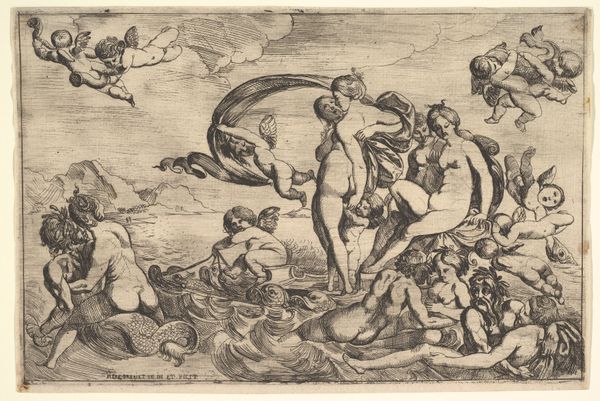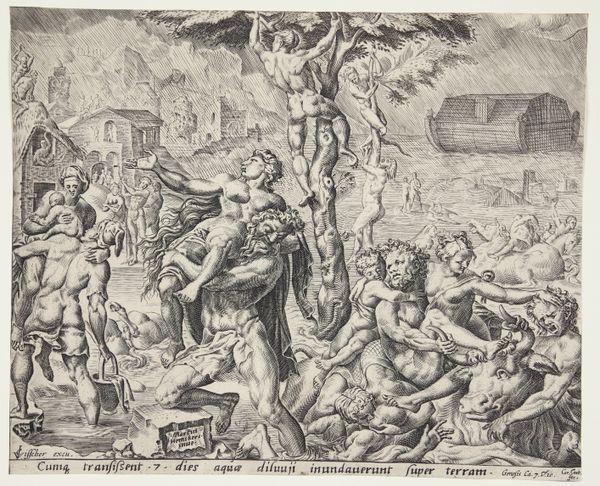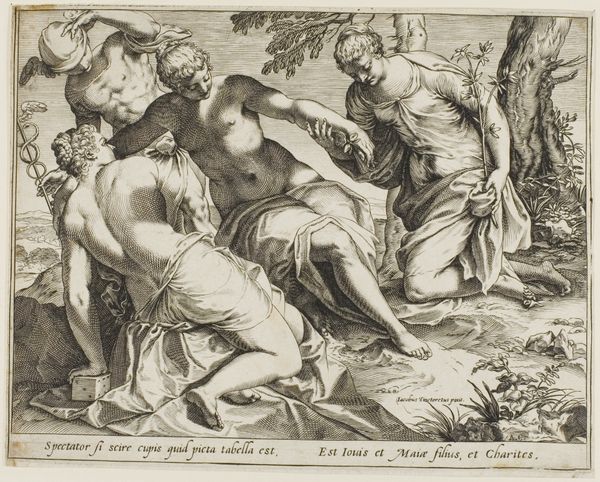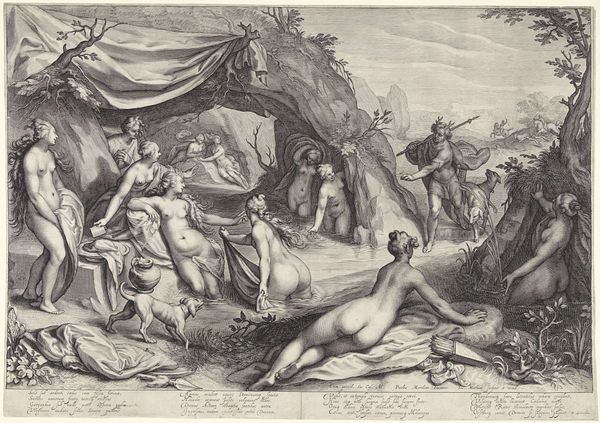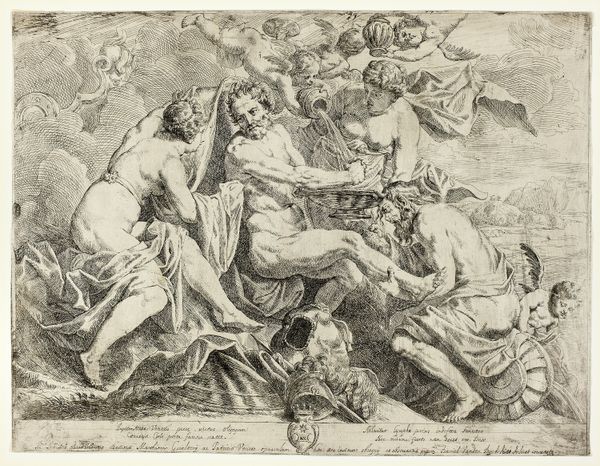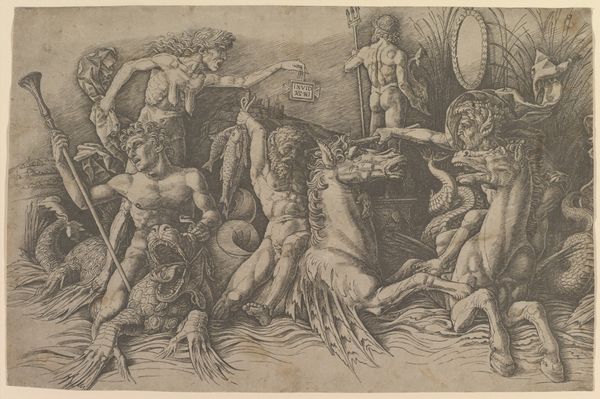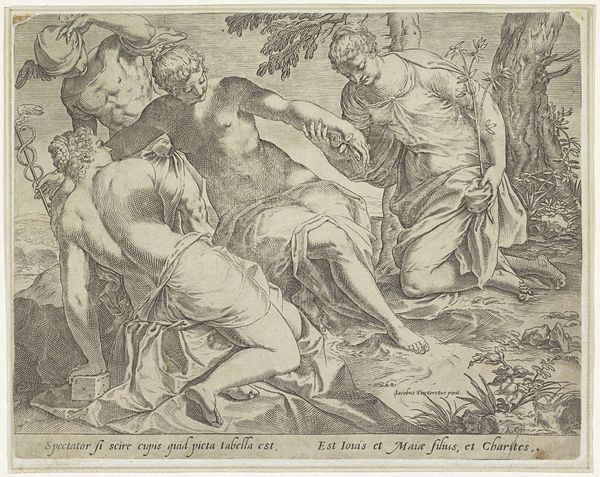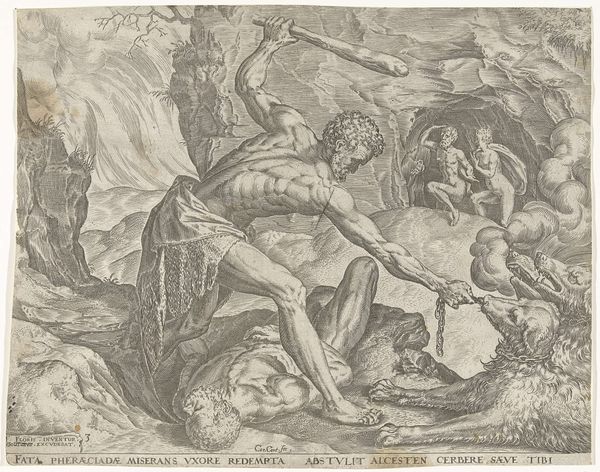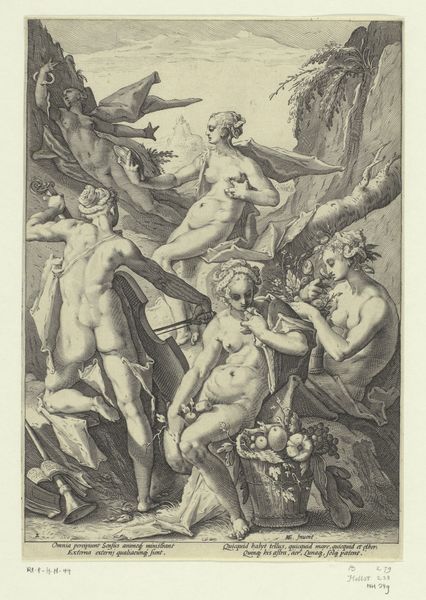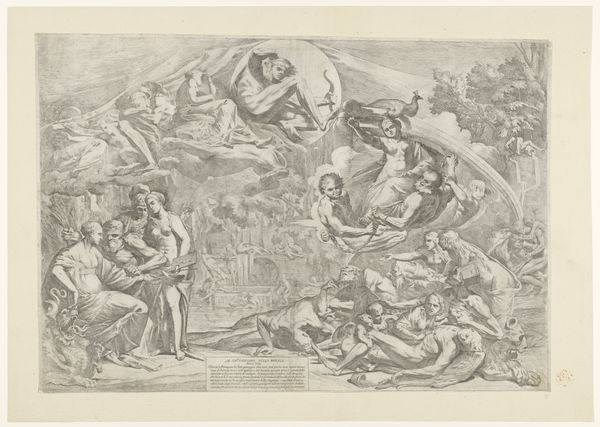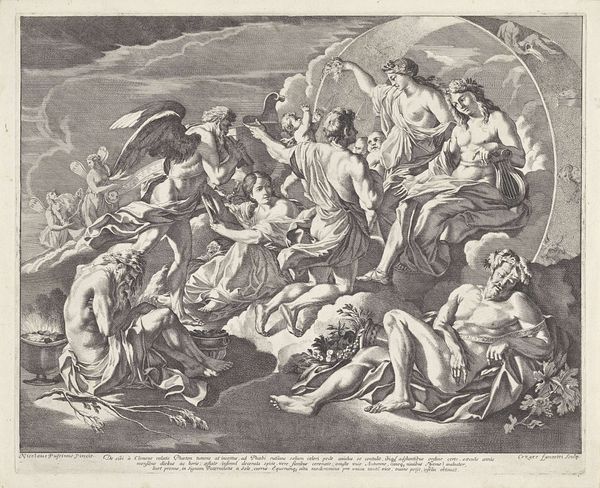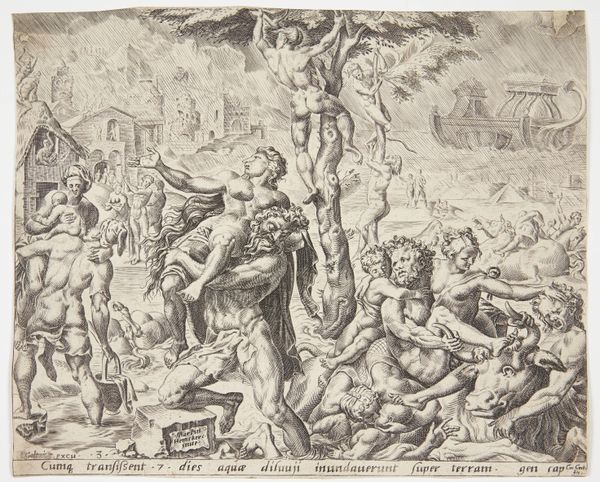
drawing, print, engraving
#
drawing
#
allegory
# print
#
figuration
#
11_renaissance
#
history-painting
#
northern-renaissance
#
nude
#
engraving
Dimensions: 12 3/8 x 16 1/16 in. (31.4 x 40.8 cm)
Copyright: Public Domain
Curator: Immediately, this scene projects a pensive mood, doesn't it? A contemplative grouping rendered in finely hatched lines, classical figures in what appears to be a kind of allegorical transaction. Editor: You've picked up on that perfectly. What we’re looking at here is “The Immortal Rewards of Virtue,” an engraving by Cornelis Cort, made in 1564. Notice how virtue is being rewarded with dignity, glory, wealth and immortality. Curator: Virtue certainly appears entwined. The figures are literally interconnected; bodies leaning on one another, their gazes directed across each other. What does this huddle signify? Editor: The posture reflects both the period and artist’s ambition. During the Renaissance, art moved beyond a strictly religious role to incorporate classical learning and moral instruction. Cort, as a northern European printmaker, bridges that desire for allegorical complexity with the increasing availability of these accessible images. Prints allowed wider circulation of complex, classically inspired subject matter, thus reinforcing visual messaging. Curator: I’m struck by the symbols clustered at the base. Mitres, scepters, and cornucopias... all emblematic of earthly power, riches, and abundance, suggesting tangible results from a life lived virtuously. The symbolic logic feels remarkably material. But does this stress a specifically Christian idea? Editor: Not exclusively. This image would participate in Renaissance humanist ideals. Virtue was considered both divinely ordained and socially necessary for building a well-ordered state, recalling Aristotle. A life of public service, guided by wisdom, could yield temporal rewards, as illustrated. Of course, immortality offered a Christian twist as the ultimate reward. Curator: So it's a weaving together of earthly and divine achievement, and you can see those symbols playing off one another here. One final observation, it is hard not to feel the density of meaning in these historical works, compared to what sometimes seems to me a rather fleeting image culture now. Editor: That’s it exactly, the work makes me contemplate the long historical view, our enduring struggle to visually represent ideals and their impact on public life.
Comments
No comments
Be the first to comment and join the conversation on the ultimate creative platform.
